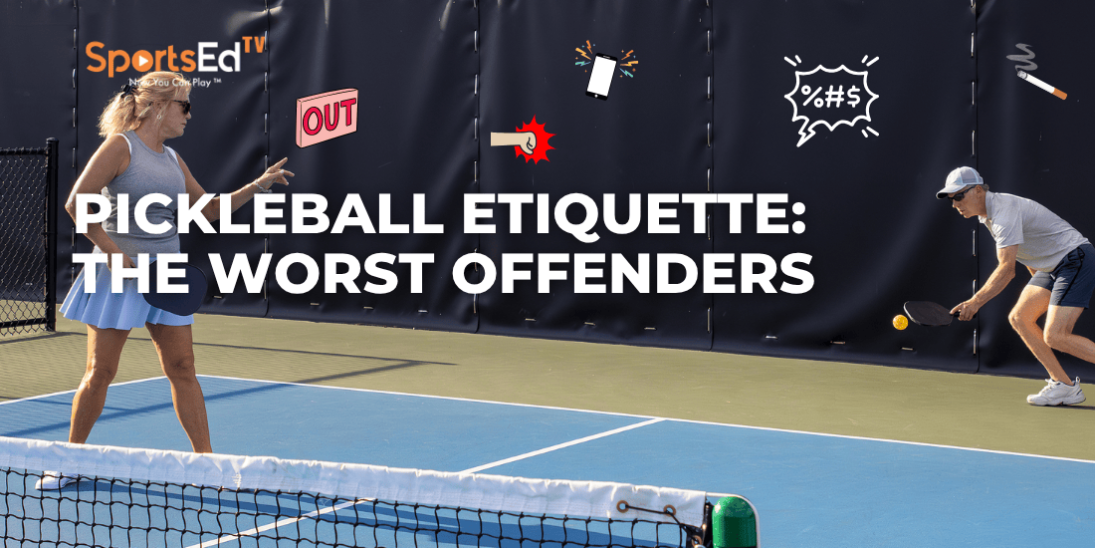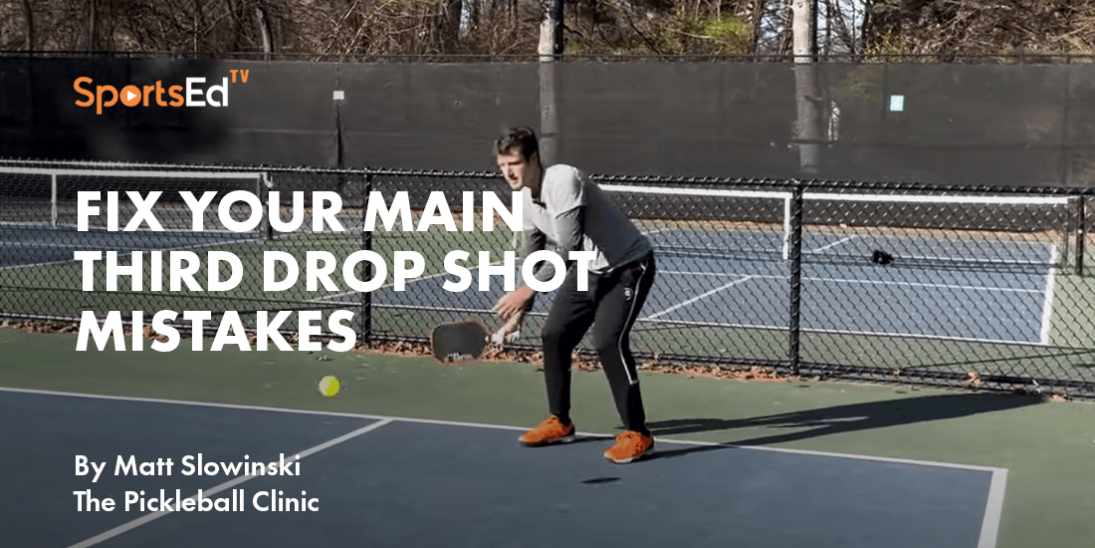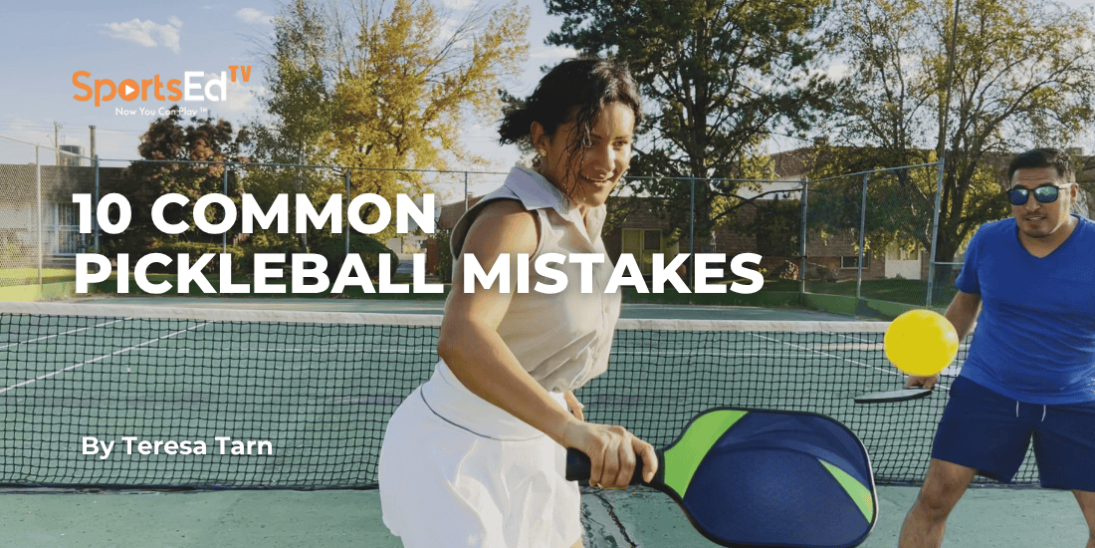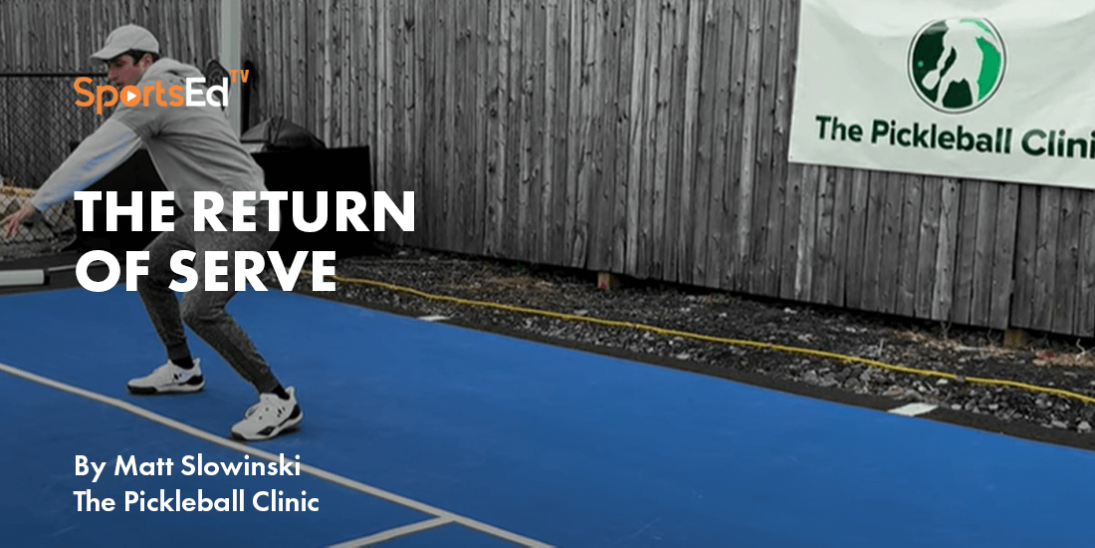Pickleball
Welcome and thanks for visiting...

USA Pickleball Officiating Director On New Serving Rule
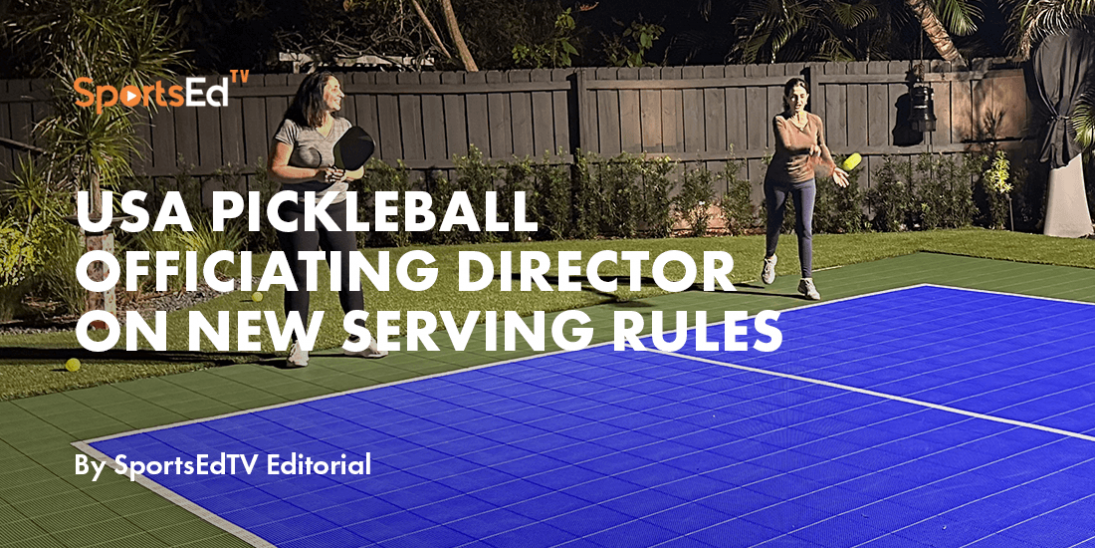
When USA Pickleball issued its 2023 Rules in updated and board-approved changes, it also revamped its rulebook.
In doing so, Mark Peifer, USA Pickleball Managing Director of Officiating observes the inclusion of a table in one of the rules “has awakened the slumbering and unknowing!”
Peifer refers to an online brouhaha surrounding the prohibition of players applying spin to serves.
More pointedly, there is plenty of pickleball word attention to its rules in Section 4—The Serve, Service Sequence and Scoring Rule, especially rule 4.a.9.
As it turns out, according to Peifer, USA Pickleball in its clarity efforts, may have opened a pandora's box of queries from the passionate pickleball player community.
In place of SportsEdTV's further portrayal of the issue, Mark Peifer has penned his take on the activity below.
“The advent of the new table in Rule 4.A.9 has caused some unexpected confusion. I’ll attempt to address some of the questions and comments brought about by the table.
The confusion seems rooted in the fact that players are missing the subtle difference between mentioning a fault (during non-officiated play) to an opponent and being able to enforce the faults listed in Rule 4.M.
Let’s dig into this a bit. While it’s accurate that players cannot enforce a service fault on their opponent, what most players are forgetting (or perhaps never knew) is that they have never been able to enforce a service motion fault. There is nothing in the 2023 Rulebook that has changed that. Said another way, there is nothing in the 2023 version of the rulebook that took away something they had previously (or thought they had).
Players have always been able to mention what they detect or think is a fault committed by their opponent, but they have never been able to enforce it. The only exception has been service and non-volley zone foot faults, but those are only enforceable if the opponent agrees they faulted. Otherwise, it is a replay (Rule 13.D.1.c).
I often ask those who bring up this question about service motion faults (or Table 4.A.9) this: "What rule last year (2022) gave you, as the receiver, the authority to call a fault on an obvious violation of the service motion rules by the server?" They can't answer the question because there wasn't any rule-based authority. Again, players could have certainly mentioned what they thought was an obvious violation of the service motion rules, but they had no authority in 2022 to call a 4.M fault and cause either a second server situation or a side-out.
They also couldn't do it in 2021, 2020, 2019, and so on. And it's not just service motion faults. Players can't call a double bounce fault on the other side of the net, either. They can call it on themselves on their own side of the net (and should), but they can't call a double bounce on the opponent's side of the net. Nor can they enforce a fault if the ball hits the opponent (Rule 7.I). Again, players can mention that they think the opponent was hit by the ball, but they can't enforce the fault. Same with the service motion violations. Players have never been able to enforce the fault, no matter how obvious it is. Yes, even an overhead tennis-like serve. Players might also find this a surprise: They can't enforce an out-of-position fault on the opponent either. Again, they can mention it, but the final word on whether it happened or not belongs to the player who allegedly was out of position.
So, what is going on here that there is all of a sudden, this ‘confusion’? After all, the rules on calling faults on opponents didn’t change. It's just that the table in rule 4.A.9 has awakened the slumbering and unknowing!
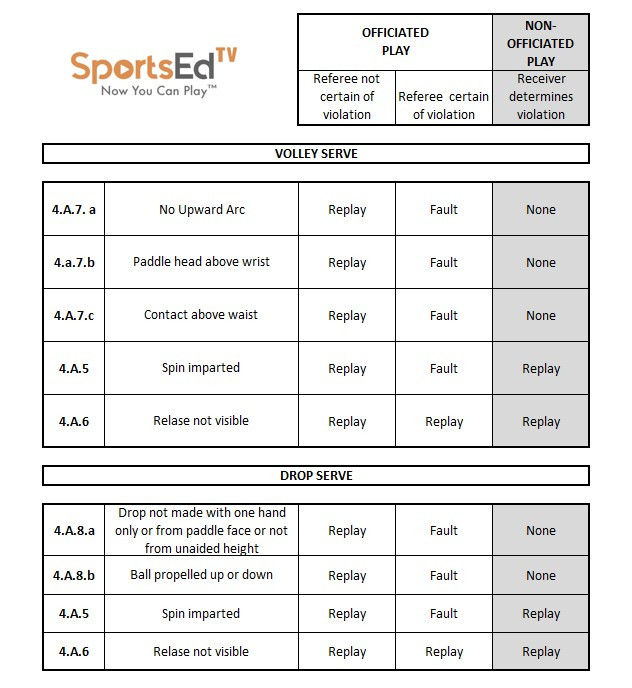
We see that as a good thing, but we certainly didn't see that coming from the table. Anytime we write a rule or present rules in a different way, in this case, the addition of that table, and it causes players to realize there are rules and know where to find them, we think it's a good thing.
We did add something new, though, and it’s on the table. We added the ability to call for a replay if the receiver thought there was manipulation of the ball. The replay in Table 4.A.9 for not seeing the release? That replay availability is now in its third year, so that isn’t new. We are as surprised about this player 'revelation' highlighted by the table as everyone else, but for a different reason. We never anticipated that putting in a table to help explain the rules - rules that, for the most part, have been in place for years would add this much value to the discussion – and knowledge - of rules.
So, what should a receiver do if they think the server has obviously violated one of the service motion rules, such as serving overhead? Catch the ball. Throw it back. By the way, if someone had asked me this question last year, that’s the same answer I would have provided. The server might try to call a fault on the receiver for stopping play (Rule 7.I), but the server has no more authority to call a fault on the receiver for stopping play than the receiver can enforce a fault for the overhead serve. If this happens, the players are stalemated. In that case, the guidance on what to do is found in the Rulebook on page 1, under "Players", the fourth bullet down the list.
I hope that helps. If players, in their quest to fully understand what’s behind the discussion above desire to know more, I invite them to take a look at Rule 13.D.1.d. And then smile. That rule pretty much sums up everything provided above.”




